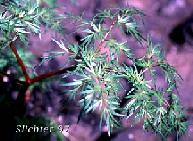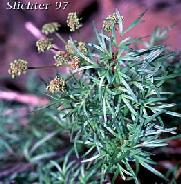

Wyeth Biscuitroot
Lomatium ambiguum (Nutt.) J.M. Coult. & Rose
A plant of day areas whose small yellow flowers are borne in compound unbels. Primary rays of the umbel are slender, unequal in length, and 1/2 to 3 inches long. the 1 to several stems often are purplish in color and may vary in height 6 to 24 inches, and arise from thick fleshy roots. Leaves greatly divided into narrow segments with their stalks broadened so as to sheath the stem. The plant tastes and smells like parsley. It flowers from the latter part of April to the latter part of June. Located on open, often rocky slopes and flats fro the scablands, valleys, and foothills to middle elev. in the mountains of Idaho, Montana, and Wyoming.. Found in Southeast Idaho in the Caribou Range near Pocatello.
Food Uses: Root may be eaten raw or cooked. A staple food for some native North American Indian tribes. The fresh root is rather like parsnip in flavor, though when the plant dies down the root becomes brittle with an agreeable flavor of celery. The root can also be dried and ground into a powder for use as a flavoring in soups etc. Seed may be eaten raw or ground into a powder. Large flat cakes of biscuit root meal were carried on long journeys for food by mountain men. With an aromatic flavor, it can be used as a flavoring in cooked foods. Flowers and upper leaves can be used as a flavoring in salads, soups etc.
Medicine: An infusion of the flowers and upper leaves has been used in the treatment of colds and sore throats.
